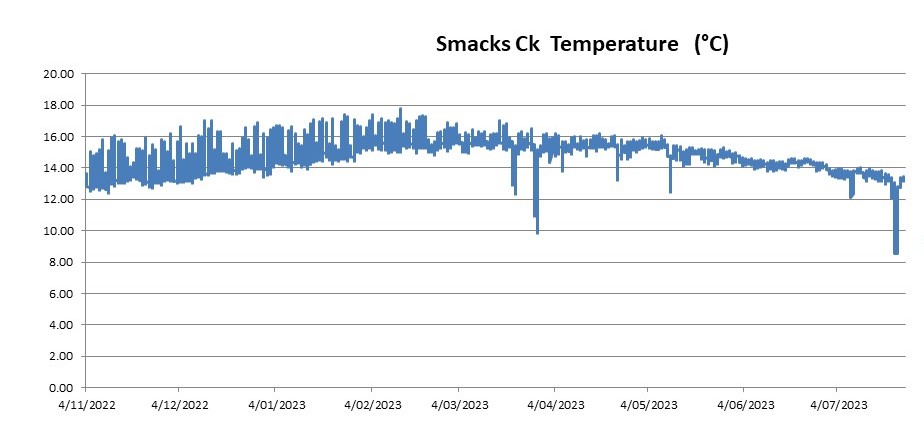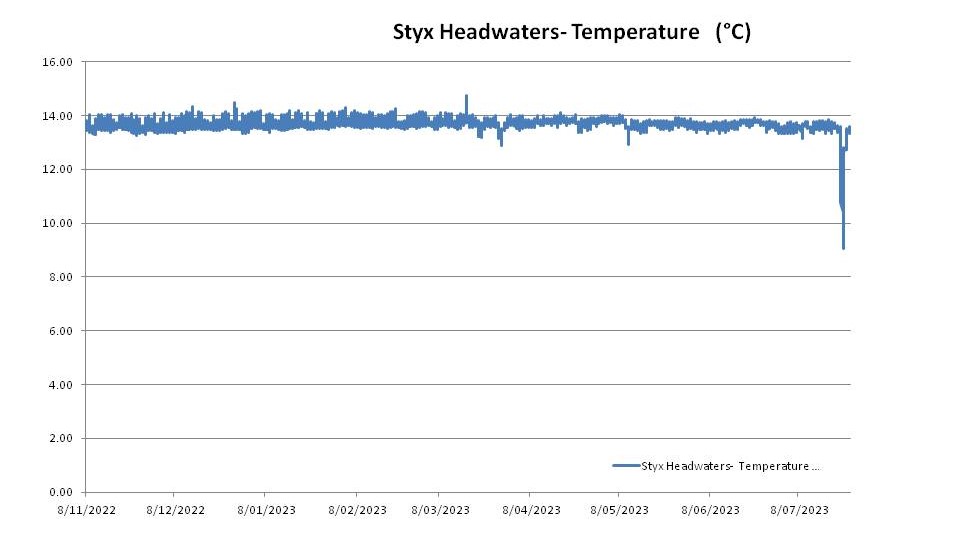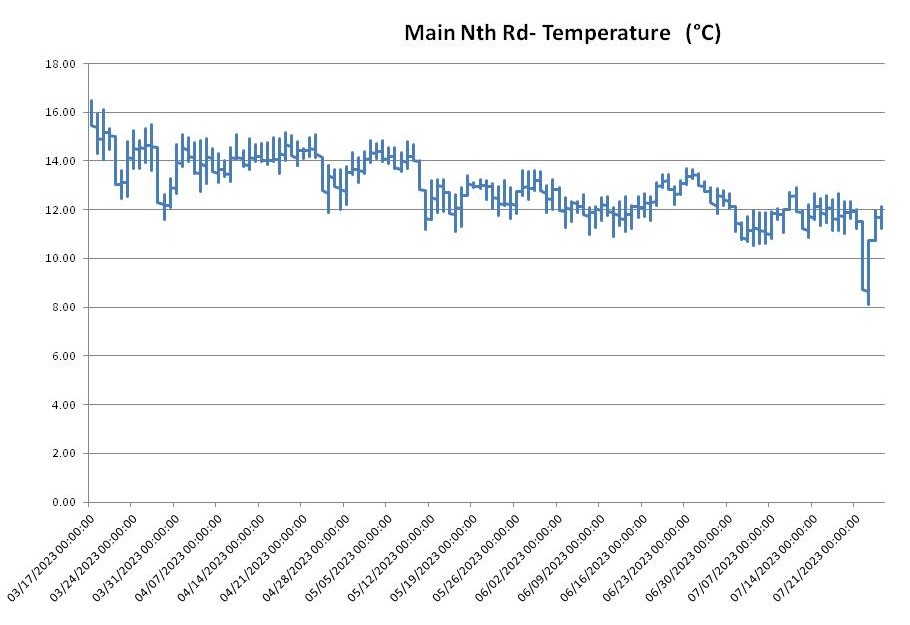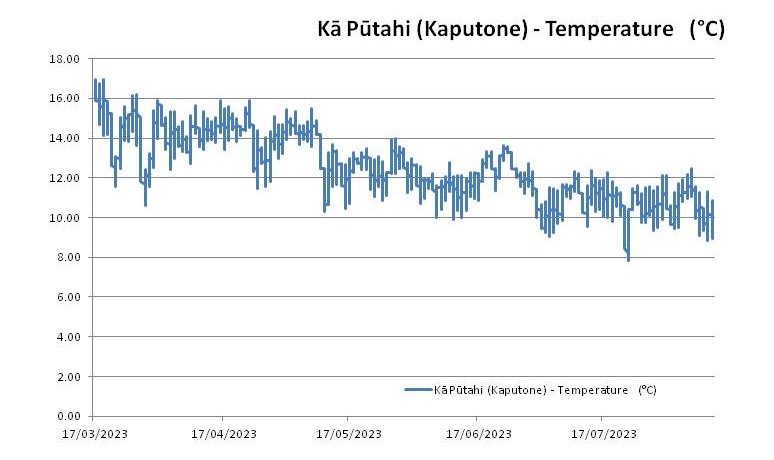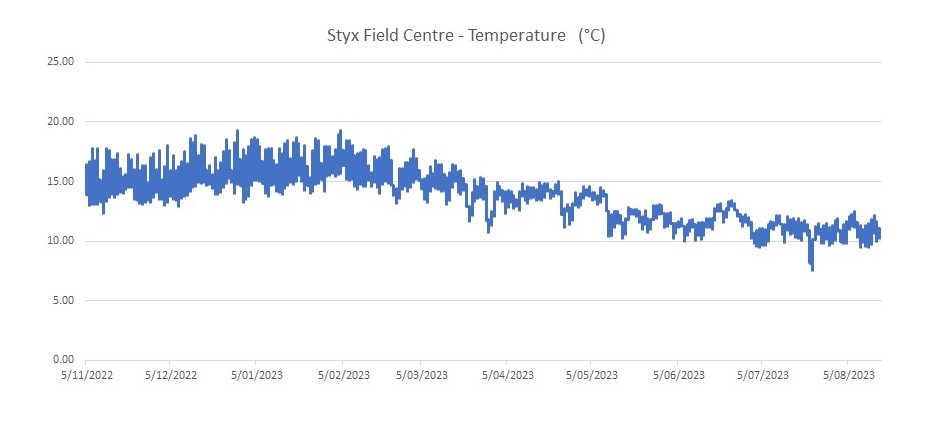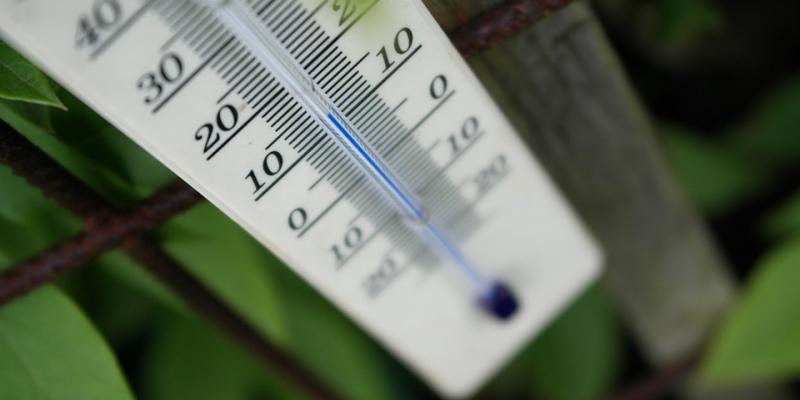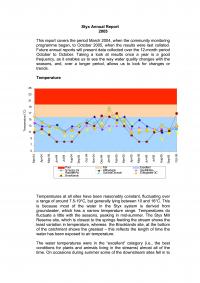Temperature
Temperature is the degree of heat or cold within a substance or liquid, in this instance water in a waterway.
Guideline values for the temperature of water in a waterway are:
Excellent < 16º C
Fair 16 to 20º C
Poor > 20º C
This page has displays both spot temperature recordings from our Water Quality Monitoring Programme and continuous temperature data from our continuous temperature loggers in the Catchment.
Water temperature has a substantial effect on aquatic life. If the overall temperature of a waterway is altered, a change in the aquatic plants and animals can be expected.
An increase in water temperature reduces the amount of oxygen in the water, making it difficult for fish and invertebrates to breathe. As their physical need for oxygen increases, simultaneously there is a decrease in the amount of oxygen available in the water.
Cold-water fish, such as trout and salmon, are very sensitive to temperature change and if temperature increases above 20º C their bodies suffer stress. New Zealand’s native fish are generally tolerant of temperatures up to about 25º C while some native invertebrates can become stressed when temperatures exceed 18º C.
Water temperature depends largely on the time of year and on weather conditions although stream type can also contribute. For example, a spring-fed lowland stream, such as the Styx River, experiences reasonably stable temperatures throughout the year compared to streams fed from rainfall and melting snow. Other factors that can affect water temperature include changes in the shape of the stream channel, reduction in overhanging vegetation, diminished water flow, or, alternatively, a discharge into the waterway.
The temperature of the river is a surface reading only. It is calculated using a long mercury thermometer supplied as part of a SHMAK kit. To be able to compare temperature readings over a period of time each reading needs to be taken at approximately the same time of the day.
To obtain a water temperature reading:
- Place the thermometer in a reasonable depth of water at an undisturbed part of the site, at the edge of the river and leave it in the water until a stable temperature is reached (usually around 1-2 minutes).
- Take the thermometer out of the river, immediately read the temperature scale, and record the result on the datasheet.
To obtain an air temperature reading:
- Leave thermometer to reach a stable temperature (about 1 minute) in a shady spot, if possible, off the ground.
Continuous Water Temperature Data Logging Graphs - Dr. Jon Harding
Stream temperatures typically vary throughout the day. They warm up in the sunshine and cool at night, so daily fluctuations over a 24hr period are normal.
Interestingly, the headwaters of the Styx River has very stable temperatures between 13-14°C. This is typical of a waterway with a springfed source. Surprisingly, Smacks Creek has a much greater range of temperatures, ranging from about 10-18°C. We might expect Smacks Creek temperatures to be similar to the Styx headwaters, however it seems likely Smacks Creek receives water from urban/industrial sources which alter the temperature.
The water temperature in the Styx River by the Main North Road shows 24hr fluctuations of 1-1.5°C, and overall the temperatures were warmer in March (up to 16°C) but have cooled in July down to about 12°C. The 8°C value was probably because the logger was out of the water for a short period.
Notice also how much the temperature drops between the Styx headwaters to the Field Centre.
